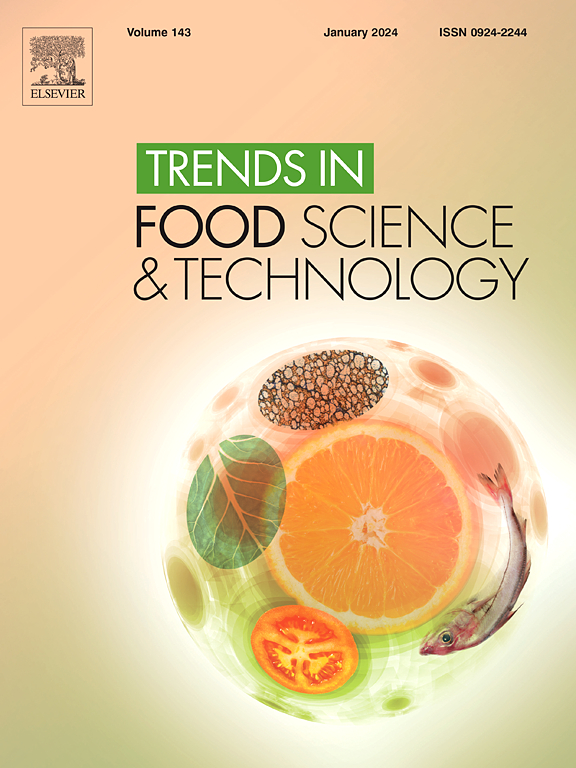Systematic review of the digestive fate of rice phenolic compounds: Insights into bioavailability, influencing factors, encapsulation strategies, and health implications
IF 15.1
1区 农林科学
Q1 FOOD SCIENCE & TECHNOLOGY
引用次数: 0
Abstract
Background
Rice is a staple food for billions worldwide and a rich source of health-promoting phenolic compounds. The availability of phenolic compounds is a critical determinant of their capacity to confer health benefits.
Scope and approach
This study encompasses a systematic review of extant research on the bioaccessibility and bioavailability of rice phenolic compounds, shedding light on approaches to augment phenolic bioaccessibility. This article delves into the potential health benefits of these compounds and identifies current knowledge gaps and future research directions. Following the PRISMA 2020guidelines, a thorough literature search was conducted across the Scopus, ScienceDirect, and Web of Science databases, encompassing the Science Citation Index Expanded (SCIE) and English-language publications spanning approximately 10 years up to February 2, 2024. A thorough analysis of 70 eligible reports was conducted to explore the relationship between rice phenolic compounds and digestive processes.
Key findings and conclusions
The examined literature indicates that rice phenolic compounds transform during digestion and colonic fermentation to lower-molecular-weight phenolics. Various factors, including rice variety and origin, particle size, phenolic structure, gut microbiota, food matrix, and rice processing techniques, influence phenolic bioaccessibility and bioavailability. Encapsulation strategies enhanced the digestive stability of anthocyanins and flavonoids, while the phenolic profile, physicochemical properties, and water solubility of the wall materials influenced their release. Digestion unlocked the biological activities of rice phenolics, including antioxidant, anti-inflammatory, anticancer, antihyperlipidaemic, antihypertensive, antidiabetic, and gut-maintaining properties. These insights will pave the way for the development of functional foods to optimize the health benefits of bioactive compounds.

求助全文
约1分钟内获得全文
求助全文
来源期刊

Trends in Food Science & Technology
工程技术-食品科技
CiteScore
32.50
自引率
2.60%
发文量
322
审稿时长
37 days
期刊介绍:
Trends in Food Science & Technology is a prestigious international journal that specializes in peer-reviewed articles covering the latest advancements in technology, food science, and human nutrition. It serves as a bridge between specialized primary journals and general trade magazines, providing readable and scientifically rigorous reviews and commentaries on current research developments and their potential applications in the food industry.
Unlike traditional journals, Trends in Food Science & Technology does not publish original research papers. Instead, it focuses on critical and comprehensive reviews to offer valuable insights for professionals in the field. By bringing together cutting-edge research and industry applications, this journal plays a vital role in disseminating knowledge and facilitating advancements in the food science and technology sector.
 求助内容:
求助内容: 应助结果提醒方式:
应助结果提醒方式:


